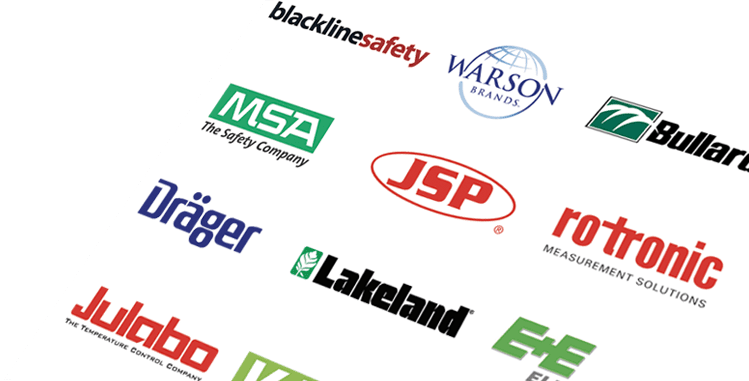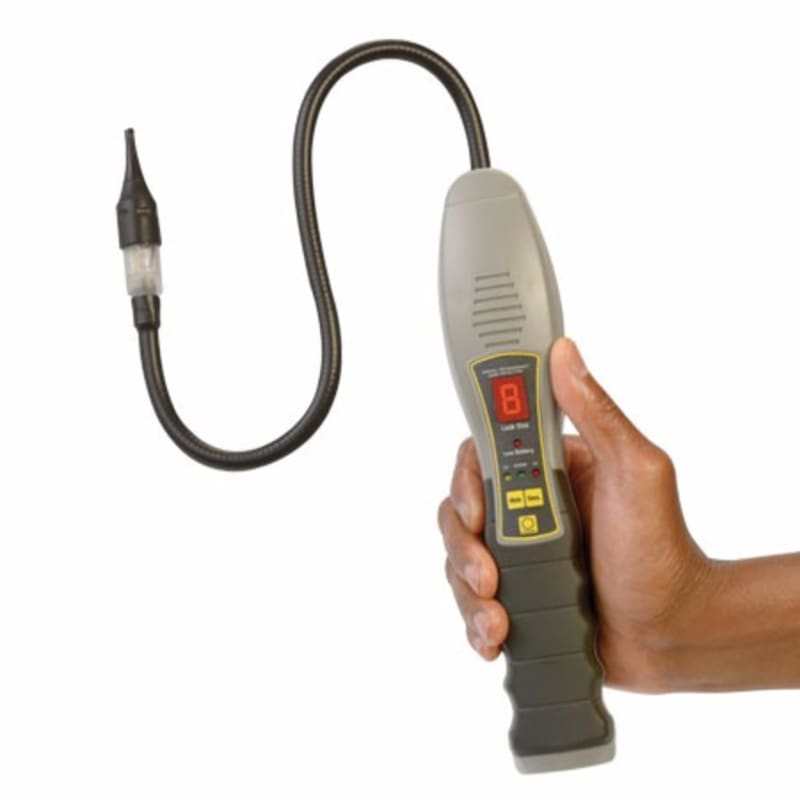The HHLT-2 is designed with a long lasting solid electrolyte semiconductor sensor can detect leaks of all commonly used halogenated (chlorine or fluorine based) refrigerant gases. They include HFCs (hydrofluorocarbons), CFCs (chlorofluorocarbons) and HCFCs (hydrochlorofluorocarbons).
Specifically, the instrument can detect:
Electronic Sensing is the Most Widely Used, Sensitive and Accurate Method of Refrigerant Leak Detection.
Why Look For Refrigerant Leaks?
There are three reasons to detect and repair leaks of refrigerant gases from stationary and mobile air conditioners, refrigeration systems and heat pumps:
1. Leaks allow air and moisture to enter an A/C system or chiller. Moisture can react with refrigerant to form corrosive acids and sludge that can damage a compressor, plug up orifice tubes, and/or eat pinholes in evaporators and condensers.
2. Refrigerant is expensive. It may seem cheaper to keep recharging your system with refrigerant than fix a leak—but it isn’t in the long run. And A/C systems and chillers that aren’t fully charged won’t cool efficiently and thus waste money (electricity-powered systems) or fuel (vehicle systems).
3. Most refrigerants deplete the ozone layer that blocks the sun’s harmful ultraviolet radiation.
The HHLT-2 is designed with a long lasting solid electrolyte semiconductor sensor can detect leaks of all commonly used halogenated (chlorine or fluorine based) refrigerant gases. They include HFCs (hydrofluorocarbons), CFCs (chlorofluorocarbons) and HCFCs (hydrochlorofluorocarbons).
Specifically, the instrument can detect:
Electronic Sensing is the Most Widely Used, Sensitive and Accurate Method of Refrigerant Leak Detection.
Why Look For Refrigerant Leaks?
There are three reasons to detect and repair leaks of refrigerant gases from stationary and mobile air conditioners, refrigeration systems and heat pumps:
1. Leaks allow air and moisture to enter an A/C system or chiller. Moisture can react with refrigerant to form corrosive acids and sludge that can damage a compressor, plug up orifice tubes, and/or eat pinholes in evaporators and condensers.
2. Refrigerant is expensive. It may seem cheaper to keep recharging your system with refrigerant than fix a leak—but it isn’t in the long run. And A/C systems and chillers that aren’t fully charged won’t cool efficiently and thus waste money (electricity-powered systems) or fuel (vehicle systems).
3. Most refrigerants deplete the ozone layer that blocks the sun’s harmful ultraviolet radiation.
 Would you like to know more?
Would you like to know more?
Our team can help you with any product information, quotes, or any general questions you may have about the product.

Putting the ‘direct’ in directory since 2009. With our global catalogue of quality safety and environmental monitoring products all under one roof, we put an end to lengthy, saturated searches. At OSE, just find and enquire and we will put you in touch with the right person to make your product purchase.


"*" indicates required fields
